Outdoor Activities and Adventures, Athens
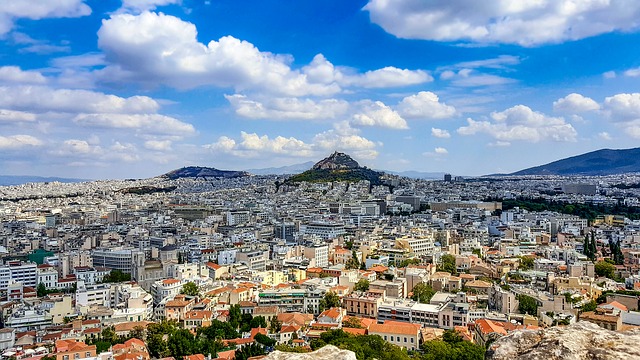
Removed from Unnamed collection
Lycabettus Hill 
Standing 277 meters above sea level, Lycabettus Hill is the highest point of Athens. Although a beautiful walk up via a circular path, it will be a test of endurance and a challenge in summer. A funicular or cliff railway can take you to the top of the hill, which proves to be a novelty for younger kids. The downside is it’s a closed tunnel, so there is no view on the way up or down.
The view from Lycabettus Hill is best enjoyed at sunset whilst waiting for the lights of the Acropolis, Temple of Olympian Zeus, Panathenaic Stadium and Ancient Agora to come on. You will also be reminded that Athens is surrounded by sea with spectacular views across the Aegean.
At the top of the hill you will find the Greek whitewashed church of Agios Georgios (St. George) and all are welcome to enter. The viewing platform in front of the church provides sprawling views of Athens, stretching out to the city’s coastline. A cafe is open for breakfast and lunch. Dinner reservations can be made at the very upscale Orizontes restaurant, that also has spectacular views across Athens. https://whyathens.com/lycabettus-hill/
Map

Removed from Unnamed collection
Sailing Athens' coastline 
Sailing down the Athens Riviera, swimming in the most beautiful waters, lunching on-board whilst parked in a tranquil bay off the Athenian shoreline and viewing an hour-long spectacular sunset.
Two of the greatest pleasures this city has to offer is that it is a coastal town and you can get out onto the water as early as April and anytime through to early October. The ‘Athens Riviera’ is a term recently coined by the Greeks that refers to almost 60 kilometres of coastline that starts about 20 minutes south of the city centre. Leoforos Posidonos Road snakes down through the upmarket suburbs of Glyfada and Vouliagmeni, all the way down to Cape Sounion and the Temple of Poseidon.
The benefits of boarding a catamaran is a much more relaxed and smooth ride compared to sailing on a yacht. Don’t leave Athens until you have sailed along her beautiful coastline. https://whyathens.com/sailing-athens/
Map
Explore more places related to this search:
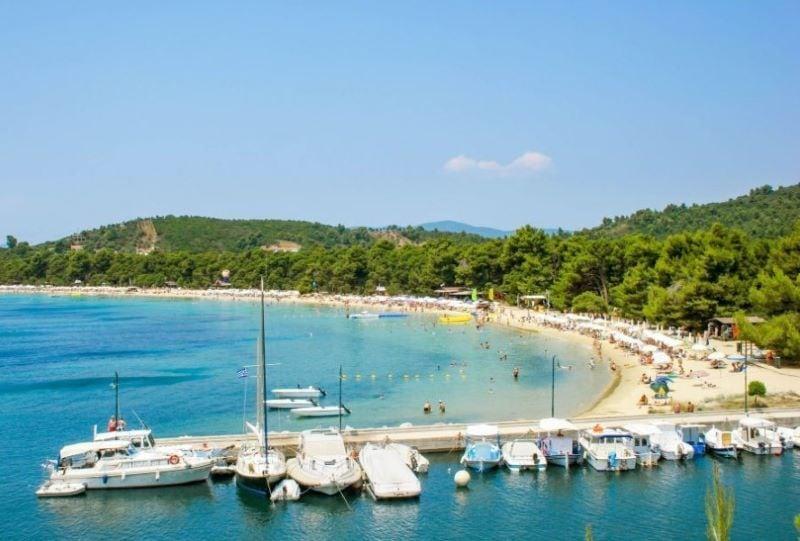
Removed from Unnamed collection
Koukounaries Beach 
Koukounaries beach is the most famous beach of Skiathos, therefore the most crowded. It is well-known for its extremely fine white sand and its fragrant pine trees forest from which the region took its name. It is considered as the most unspoiled natural beach of the Mediterranean and is a protected environment. The beautiful crystal-clear deep blue waters are a real pleasure. Since the beach is well-organized, it offers many water sports, chairs, umbrellas, beach bars.
The region around the beach is full of restaurants, taverns and hotel units. A local bus links this beach to the capital every 30 minutes. A biotope can be found in the pine forest boarding the beach where different species of plants and birds are protected. This place, as well as the beach, is developed for ecotourism, financed by the Municipality and the European Union. https://www.greeka.com/sporades/skiathos/beaches/koukounaries/
Map

Removed from Unnamed collection
Firopotamos Beach 
Firopotamos Beach Milos: One of the many beaches on the Greek island of Milos is Firopatomos beach. Trees surround this beach. The canteen at this beach is a place where many young people hang out.
The water is not polluted is a beautiful blue color that you might see only in postcards. The waters have also been said to look a giant swimming pool. The beach is inside a small bay where many fishermen live and fish. You will not feel any wind when it goes in a southerly direction. https://www.greeka.com/cyclades/milos/beaches/firopotamos/
Map

Removed from Unnamed collection
Milos Klima 
Klima is one of the striking fishing villages on the Greek island of Milos, with its little white houses built along the water. In the middle of the 19th century, these houses were owned by fishermen who used them as second homes and as boathouses. The fishermen usually lived in Plaka and left their boats here along the water. On the lower floor was storage for the boat, while on the top floor was living space and a place for the fisherman to sleep. During the 20th century, however, the function of the fishermen's cottages changed and became the second homes for the families of the fishermen. Today, these houses are rented to vacationers.
Klima is accessible through Plaka and Trypiti. Unfortunately, parking can be difficult to find. You may have to park your car along the road, a hundred meters from the village, and walk by foot to the village. There are no beach bars or taverns. The only public place is the Hotel Panorama, which is slightly higher and a small distance away. https://www.justgreece.com/destinations/klima-milos.php
Map
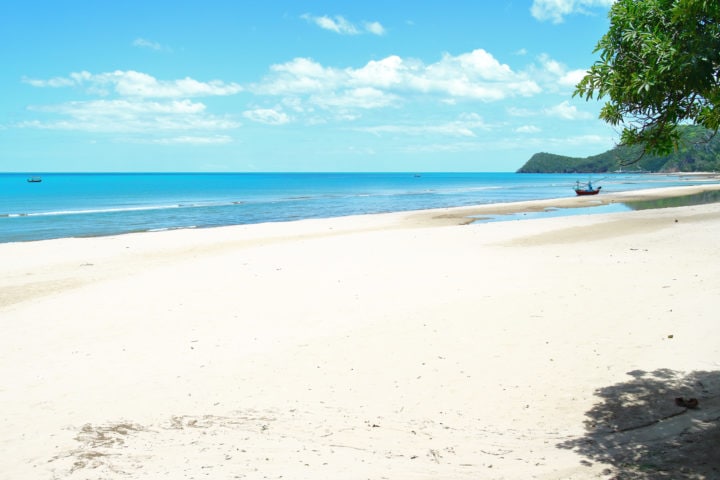
Removed from Unnamed collection
Korfos Beach 
Korfos Beach is located about 3 km from Mykonos town just before the settlement of Ornos. It is a quiet long beach, with sand and shallow waters. It has a northern orientation and because of its location, when northerly winds blow, big waves are created favoring water sports such as kite surfing, wave riding, wind surfing and more http://www.gomykonos.guide/korfos-en.html
Map
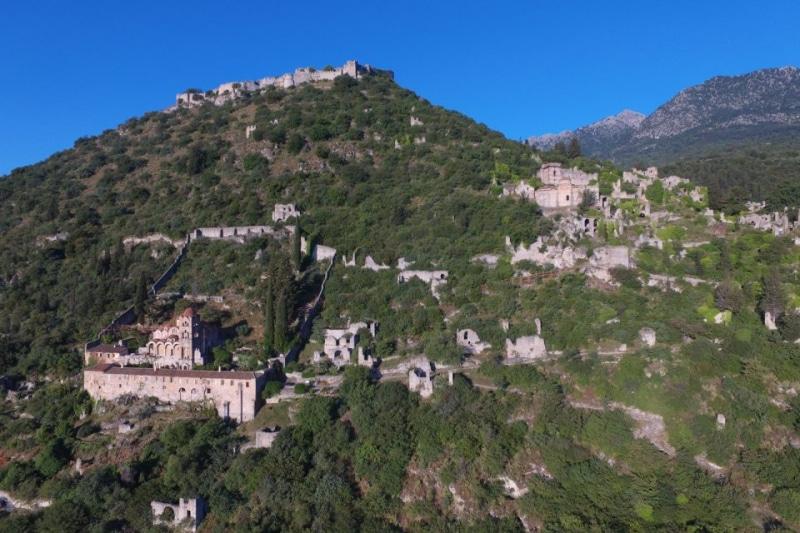
Removed from Unnamed collection
Mystras 
The Mynicipal Unit of Mystras includes the former communities of Agia Irene, Agios Ioannis, Anavriti, Loggastra, Magoula, Mystras, Paroreio, Soustianoi and Tripi.
Nestled in Mount Taygetos and its lowlands, the municipal unit of Mystras offers both relaxation and recreation to visitors all year long.
Anavriti also serves as a base for ascents to the summit. Hiking paths and trails include the European E4 trail ascending to the Mountain Refuge, as well as paths to Mystras, Agios Ioannis and Taygeti. From the village of Parori, a 15-minute trek along a path leads to Our Lady Langadiotissa, a marvellous church tucked in a cave, and to the Monastery of Fan¬eromeni. Starting at Mystras, an inviting trail leads to Pikoulianika and Taygeti, as well as Agios loannis of Vouvalon in modern-day Mystras (only 10 minutes from the town square).
A visit to the Kaiadas chasm is essential, as is a stroll around the enchanting gardens of the Sainopouleio Amphitheatre, where the construction of a new athletic center is about to break ground. A tour of the springs in Tripi, ie Karvasara, Vasiloneri and the Knakiona springs at the Monastery of Agios Giannakis, is an exceptional experience. The Langada Climbing Park is also worth a visit for the crag climbing adventurer. Other worthwhile sites include the Byzantine bridge of Agios Sostis and the 4 water mills in the village of Agia Irene, the Byzantine churches of the Taxiarches (the Archangels), Our Lady the Virgin and St. Nicholas in Loggastra and finally, in Soustianoi, the Gorge of the Fairy, the Koumoundouros caves and the magnificent church of St. Nicholas. https://www.exploresparta.gr/tourism/en/mystras-sparti/
Map
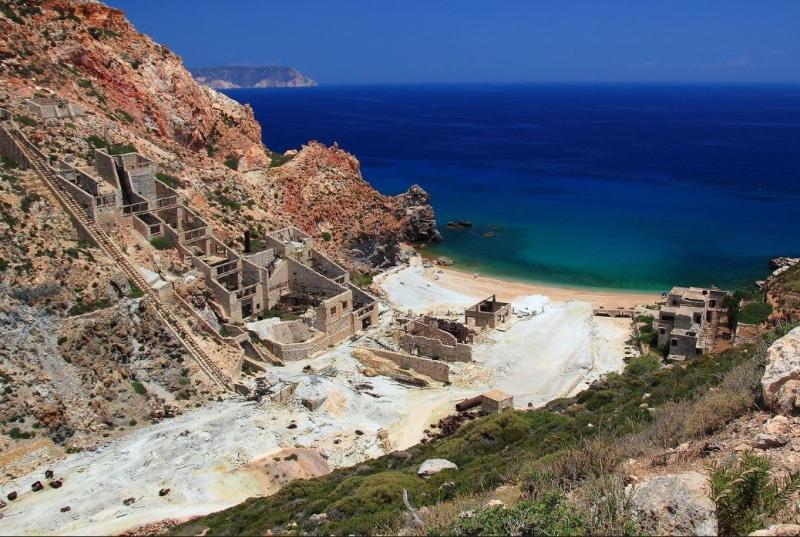
Removed from Unnamed collection
Old Sulfur Mines (Thiorichia Beach) 
The island of Milos often reminds visitors of its mining history. It does so by the sulphur mines located on the east side of the island.
It is worth visiting these mines and find yourself travelling back in time. Facing the sulphur mines, where up to 50 years ago sulphur was being mined, it feels like they have never stopped working. The ruins of the facilities along with all sorts of tools and objects, the railroad wagons carrying the sulphur in ships, make it easy on every visitor to imagine how the workers were working in this mines.
The sulphur mines operated from 1890 to 1960 with some interruptions. Because of the big production of cheap sulfur, mainly in America, the mines finally stopped operating.
Meanwhile, the sea and at this point of Milos is unique; Swim in the crystal clear waters and lie down on the colourful (shades of yellow due to sulfur) pebbles of the coast. https://www.milos-tours.gr/en/what-to-see-do/attractions/milos-sulphur-mines.php
Map
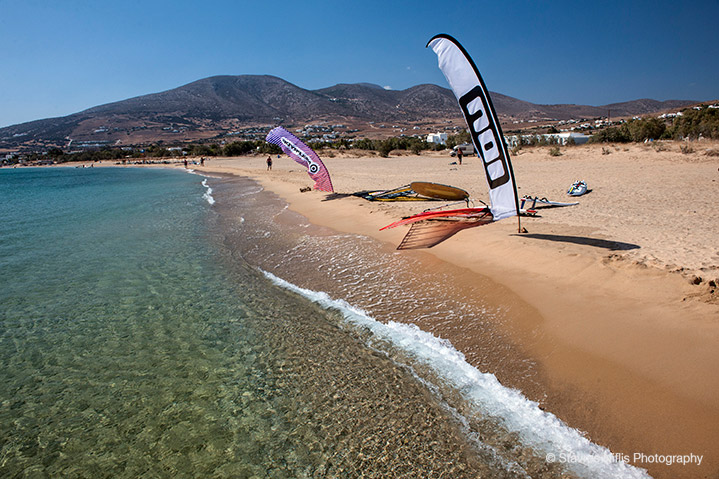
Removed from Unnamed collection
Nea Chryssi Akti 
Nea Chryssi Akti is a long, sandy, organized and crowded beach, and one of the beaches of Paros preferred by surfers from all over the world. The World Windsurfing Championship was held there in the 90s. Sports enthusiasts will find everything they need at Nea Chryssi Akti to enjoy air and watersports. http://www.paros.gr/en/what-to-do/shmeia-endiaferontos/paralies/779-nea-chryssi-akti.html
Map

Removed from Unnamed collection
Nea Kameni and Therassia islands 
Nea Kameni and Therassia are two volcanic islands located next to Santorini. This can be a perfect day trip getting from one island to another with unforgettable views once you reach the top of the island. http://www.santorini.gr/index.php?option=com_content&view=article&id=177&Itemid=74&lang=en
Map

Removed from Unnamed collection
Ziros Lake 
Stylish buildings that blend harmoniously with the region were built on the banks of Lake Ziros between 1950 and 1955. The purpose was to create a Children’s City (Paidoupolis in Greek, also known as Ziropolis) to look after the orphaned children of the Second World War and the Greek Civil War, on the initiative of Queen Frederica.
Stylish buildings that blend harmoniously with the region were built on the banks of Lake Ziros between 1950 and 1955. The purpose was to create a Children’s City (Paidoupolis in Greek, also known as Ziropolis) to look after the orphaned children of the Second World War and the Greek Civil War, on the initiative of Queen Frederica.
Lake Ziros is an important and stunning natural attraction, which is relatively unknown to the public because it is not shown on tourist maps with a scale below 1:300,000. The buildings of Ziropolis were designed by Austrian architects in 1955. The lake is approximately 1000 m long and 500 m wide and has an elliptical shape. It has a depth of over 25 m at its deepest point. Until 1965, when it was almost destroyed by an earthquake, Ziropolis was an important educational, cultural and economic centre in the region. http://www.visit-preveza.com/el/ziros
Map
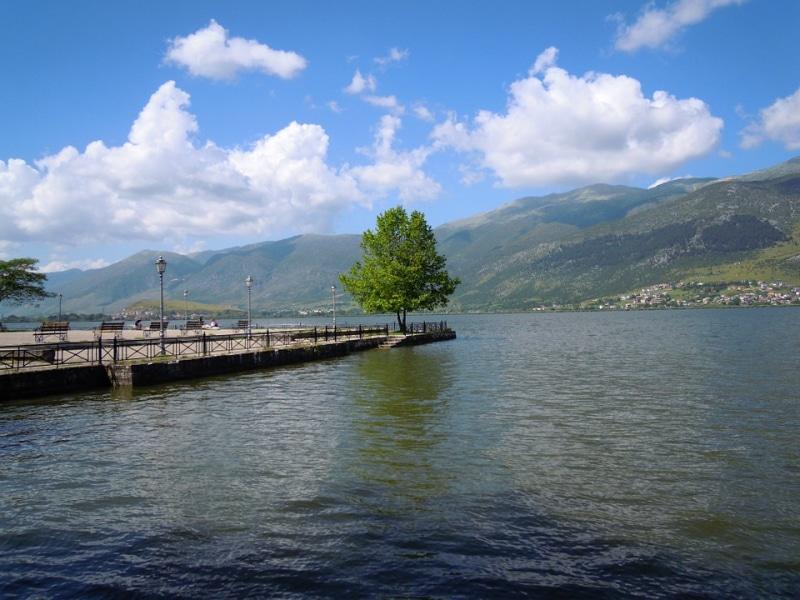
Removed from Unnamed collection
Lake Pamvotida 
The routes around the lake offer exquisite scenery and plenty to explore. A tour by car is an experience to suit all kinds of traveller - there is much to see, much to learn about, and there is the serene calming effect of the lake http://www.visitgreece.gr/en/main_cities/ioannina
Map

Removed from Unnamed collection
Sarakiniko Beach 
Sarakiniko Beach Milos: This beach is one of the most beautiful beaches of Milos and surely the most particular one. It is located along the coastal road east of Adamas, north-east of Milos. It is the most photographed spot of the island and is also considered as one of the most beautiful Greek beaches. Its particular landscape is very impressive and surely unforgettable: long horizontal rocks bent over the sea; those rocks are eroded by time and saltwater and have small and huge hollows all over them.
The entire landscape formed by the volcanic rocks doesn't show any signs of vegetation and is coloured entirely in a bright white, which makes an interesting contrast with the deep blue and turquoise of the surrounding waters. This amazing scenery gives one the impression of standing on the surface of the moon. https://www.greeka.com/cyclades/milos/beaches/sarakiniko/
Map

Removed from Unnamed collection
Kos Natural park 
Find peace and connect with the Nature in Zia Natural Park. Walk on the stone paths between the trees and breath the fresh air. Have a close look at the local animals and plants in their natural environment. http://www.kos.gr/en/sights/SitePages/view.aspx?nID=86
Map
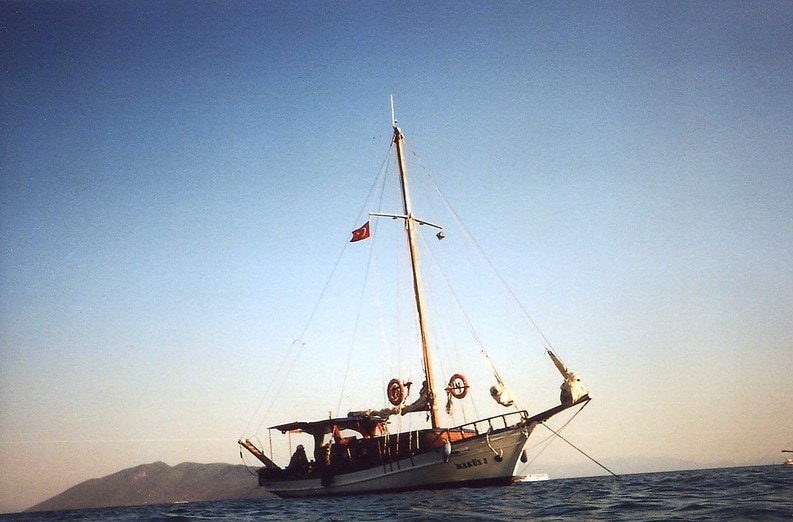
Removed from Unnamed collection
Blue Voyage 
Blue Voyage is one of the most relaxing vacations you can ever have for a lifetime. It is an adventure that embraces both green and blue and tranquil your soul in a unique way. It is kind of a vacation that you can have with your loved ones, just the way you prefer it and wish that it would never end.
Do not be late to have that extraordinary voyage that embraces you with the blue waters of the Aegean. Conquer the beauties of nature and the ancient sites on the coves being visited which you had no idea that they even have existed.
That way you will witness the beauty of the sunrise and the sunset with all the beauty of it while swimming in the crystal blue waters. http://www.barbarosyachting.com/Blue-Voyage-Bodrum
Map
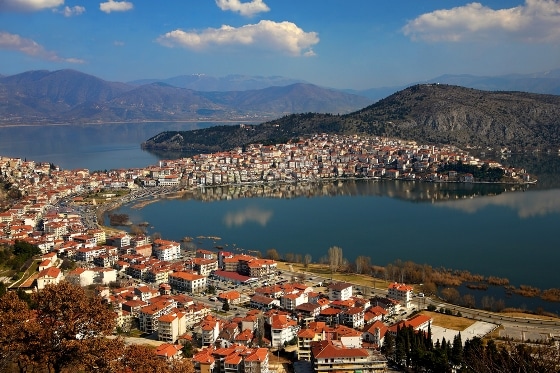
Removed from Unnamed collection
Orestiada Lake 
The best way to explore the city is taking a little tour around the lake starting from the southernmost side up to the northernmost. Take a stroll on the narrow pathway along the lake’s coast; you will be overwhelmed by its idyllic beauty and tranquility. http://www.visitgreece.gr/en/main_cities/kastoria
Map
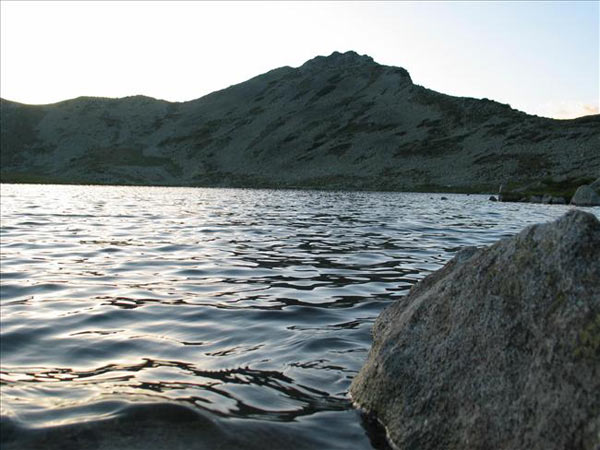
Removed from Unnamed collection
Pirin National Park 
Because of the unique biodiversity and spectacular natural formations of Pirin, the Government of Bulgaria has established over 40,000 ha of mountain protected area – Pirin National Park. It is a piece of nature that is a priceless Bulgarian and world heritage and is included in UNESCO’s “Man and the Biosphere” program.
The landscape of the Pirin Mountains is diverse and includes a notable alpine area, dotted with many lakes, forested mountain landscapes that define the unique fauna richness in the mountain.
The composition of forests in the territory of Pirin National Park includes 16 tree species, some of them are endemic species, others are of particular conservation significance, or represent some of the largest inventories of tree species in Europe and in Bulgaria. The total area of the Pirin National Park is 40,356 ha and the forested area is 23,110 ha. Within the large area there is dwarf pine, white fir, white pine, spruce, fir, beech, and black pine. The average age of forests in Pirin National Park is 85 years, the largest proportion of forests are older than 140 years. http://bansko-guide.com/attraction/pirin-national-park/
Map

Removed from Unnamed collection
The Waterpark 
The Waterpark is the biggest in Europe and the one on the island of Rhodes. Located in the popular resort of Faliraki, the Waterpark is situated on the costal road and is easily accessible. It offers remarkable and spectacular rides, unique splash pools and water slides. http://www.rodosisland.gr/en/see-do-rodos/Sports-&-Activities/Water-Park.asp
Map
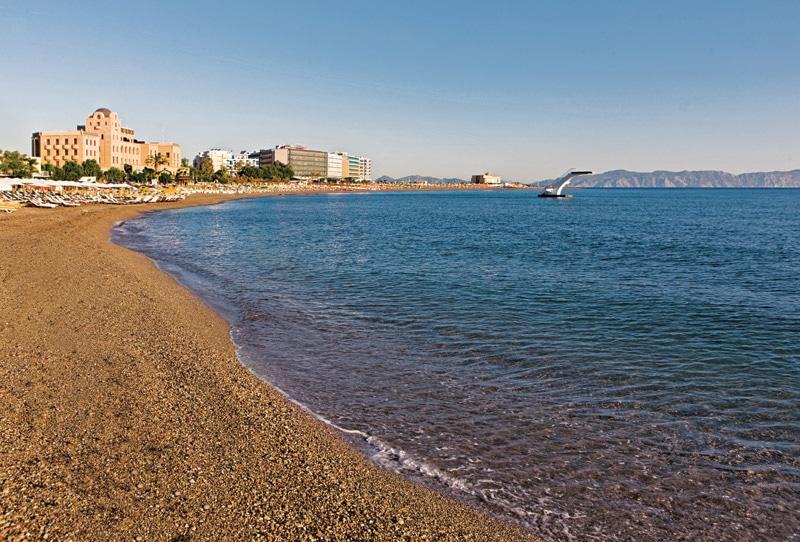
Removed from Unnamed collection
Kallithea Beach 
The beach is rocky, with some sandy spots and several pine trees. The picturesque tiny cove with the crystal waters offers a spectacular sight with the facilities of the medicinal baths on the background, the Baths of Kallithea. http://www.rodosisland.gr/en/see-do-rodos/Island-Attractions/Beaches-&-Bays-.asp
Map

Removed from Unnamed collection
The Old Town Plovdiv 
Ancient Plovdiv Architectural and Historical Reserve (The Old Town) is located in the Central part of the city of Plovdiv on the Three Hills (Nebet Tepe, Taksim Tepe and Dzhambaz Tepe) and covers an area of about 35 ha. It was formed due to the continuous life over the centuries – from Prehistoric, Thracian, Hellenic, Roman, Late-ancient, Medieval, National Revival, and Post-Liberation periods to present days. The combination of the prevailing Antiquity, Middle Ages and Revival in an independent core within the modern city is one of a kind for our country.
From the Roman and the Late-ancient period in the Old Town have been best preserved the Ancient Theatre, the Ancient Forum, the Roman Stadium, Early Christian basilicas, public and private buildings, pipelines, street network and parts of the fortress walls, constructed in the Antiquity and the Middle Ages.
From the National Revival period the authentic architecture of houses as well as several churches and school buildings have been preserved. The residential buildings are divided into two main groups. The first group of houses corresponds to the mountain asymmetrical type, but it has been expanded and enriched for the needs of the urban life. The second group is the so-called “Plovdiv symmetrical urban house”. This group of buildings is characterized by a unique national interpretation of the European baroque. http://www.visitplovdiv.com/en/node/676
Map
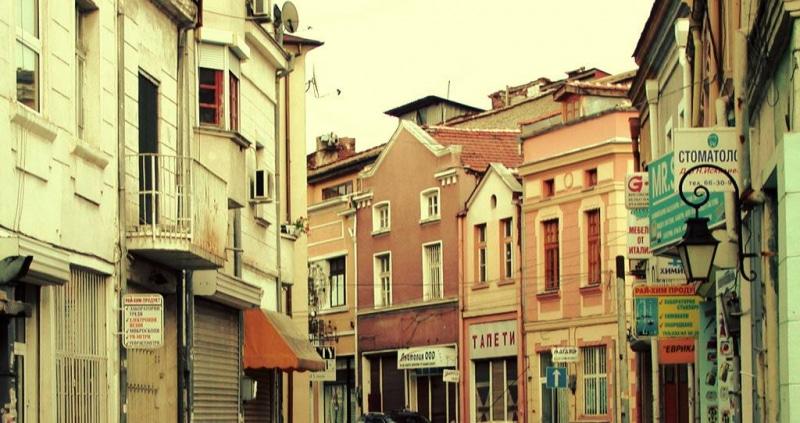
Removed from Unnamed collection
Kapana (The Trap) 
Steering just a little from the Main Street in Plovdiv and imperceptibly you find yourself in “Kapana” (literal translation: “The Trap”). Once you get there you would never want to go back.
You will find galleries, workshops, ateliers, studios, cozy restaurants and shops, as well as other art spaces, and there is even a vinyl shop! And to back our words up, here is a list of places you should not miss in “Kapana”: Vinyl’s home place Soul Searchin’ – Point-Blank Gallery – Darvodelie Atelier – What A monster – Kotka and Mishka....
All these places fill “Kapana” with modern cultural content not only with their daily activities but also organizing events with social, economic and cultural effect for the city. What happens in the new/old art district of Plovdiv is so much – concerts, exhibitions, festivals, forums, brainstorming sessions and discussions, theatrical performances, art installations, screenings, workshops and many more. http://www.visitplovdiv.com/en/node/2984
Map

Removed from Unnamed collection
Pamukkale Hot Springs 
Pamukkale is an amazing display of natural hot water pools in Denizli Province, south-western Turkey. What you see in the photos below are known as travertines or the terraces that form due to the carbonate minerals that gather up as the flowing water circles. http://www.mygola.com/pamukkale-hot-springs-p62990
Map
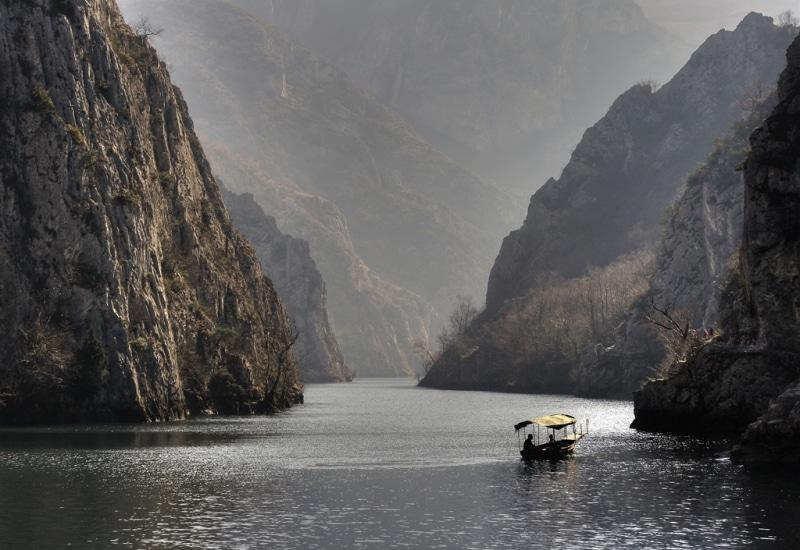
Removed from Unnamed collection
Matka Canyon 
Matka - A gorge in which a rich complex of mediaeval building survives, including churches, monasteries and remnants of a fortress (the mediaeval town of Matka).There are dozens of caves and a large number of endemic plants and animals. The Canyon covers an area of around 5.000ha and is located 15km south-west of Skopje. By its morphogenetic characteristic, it is a breakthrough gorge. Krastic form deserve particular attention here-ten caves with their length ranging between 20 and 176 meters and two vertical chasms with a depth up to 35 meters. Matka was one of the largest refugee centers during the glacial period resulting in the presence of a high number of relic and endemic plants, 20% are endemic or relic spices. Among Tertiary relics, the most significant are the Kozani violet and Italy's Ramonda (Ramonda Natalie). It is also important to mention that there are 77 species of Balkan endemic small butterflies in area of Matka Canyon, while 18 other species are new to the science. http://www.exploringmacedonia.com/matka-canyon.nspx
Map
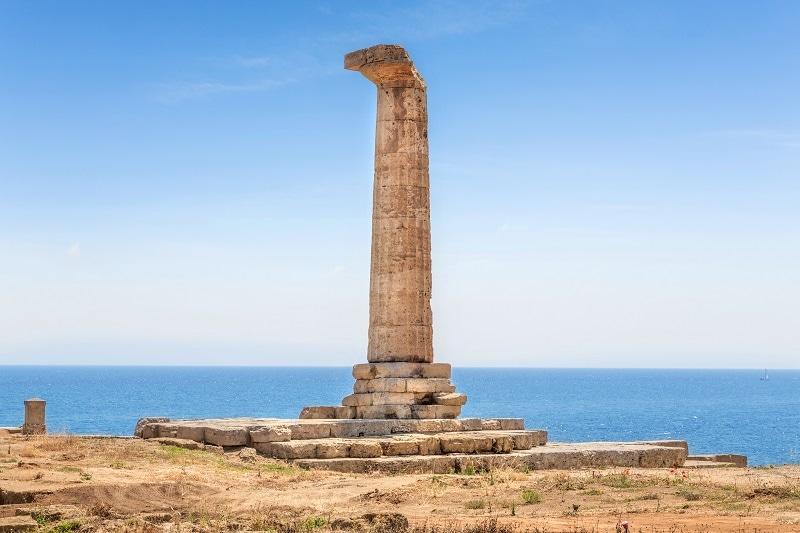
Removed from Unnamed collection
Capo Colonna 
Symbol of the city’s millenary history, the Doric column erected on the Capocolonna promontory (at about 13 km from the centre of Crotone) carries an echo of the splendour of the Magna Grecia period.
It is the only remaining column of the temple dedicated to the goddess Hera. Dating back to the 6th century B.C., it was one of the most important religious locations in Magna Gr�cia, upon which today stands Capocolonna Archaeological Park.
The Park is made of roughly 30,000 square meters of terrain allocated for excavations which brought to light the foundations of different buildings and domestic locations, along with 20 hectares of Mediterranean woods in which are present pleasant natural trails that lead from the museum to the column. http://www.portofcrotone.com/index.php?id=72
Map
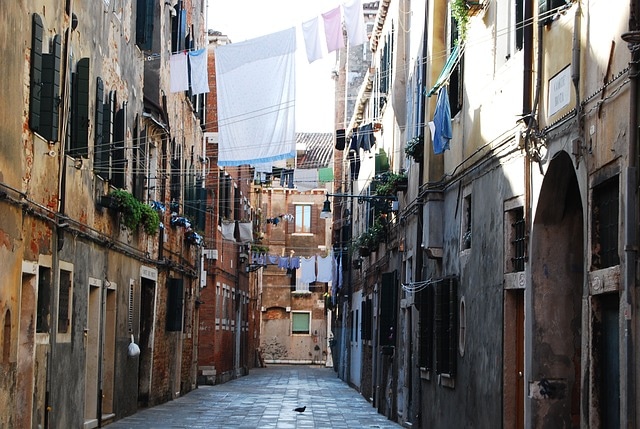
Removed from Unnamed collection
Old Town Centre 
The Old Town Centre of Crotone is easily identified because it is situated on a hill, close to the sea, enclosed until the end of 800, from the sixteenth century city wall with a very ancient history. According to archaeologists, the acropolis of the ancient Kroton stood here. It is said to house, among other buildings, the Temple of the Muses, home of the Pythagorean school, known throughout the Mediterranean. It is a very layered urban fabric, which for the continuous destruction, reconstruction, alterations, increases in volume that are superimposed over the course of three centuries, which have no name of the type Byzantine, Medieval,Renaissance, Baroque. The city was subjected to several foreign domination over the centuries whose influence is reflected in the heterogeneous style of its old town center. The types are mostly composite, with many terraced houses, narrow winding streets, wherein the worship buildings and noble palaces are concentrated in little squares. Political power and religious power are added together in these contexts of social life, where shops of merchants and artisans overlook the, but on which lies primarily the importance of the church, the convent of the palace. While Castle Square preserves the centuries the peculiarity of Square of arms, Dome Square, the political center of the city is the seat of Royal House, the Bishop's Palace, and of course the Cathedral church. At Suriano Square Suriano (now Umberto I Square), destined for popular assemblies, dominate the convent of St. Francis of Assisi, now the Seminary, with the annexed church and mansions of Suriano (now Albani Palace),and the Marquis Berlingeri. http://www.comune.crotone.it/flex/cm/pages/ServeBLOB.php/L/IT/IDPagina/4732
Map
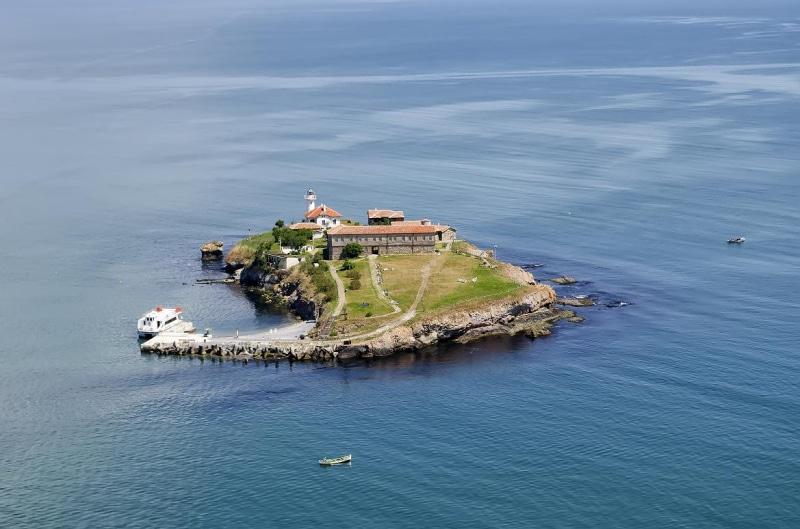
Removed from Unnamed collection
St. Anastasia Island 
St. Anastasia Island is located in the Burgas Bay in the Black Sea. It is a volcanic rock island, 12 meters high, at some places up to 17 meters high, and its area is almost 9 decres. Between 1959 and 1990 it was known as Bolshevik Island. It is surrounded by mystery and there are hundreds of legends and stories about it.
A healing place, offering wonder-working herbs and potions from old recipes, medieval monastery cell, where you can stay overnight, restaurant with authentic Burgas meals from old recipes… all this in the most romantic place in the Burgas Bay – St. Anastasia Island. You can get there on a boat, leaving from the Sea station Burgas.
Until recently, this sounded like a fairy tale, but for several years it is s part of Burgas’ reality, thanks to the project, won by Municipality Burgas – “Cultural-historical heritage on St. Anastasia Island” and “Burgas – an attractive and competitive tourist destination”, financed by the Operative Programme “Regional Development” https://www.gotoburgas.com/en/places-to-go/view/23
Map
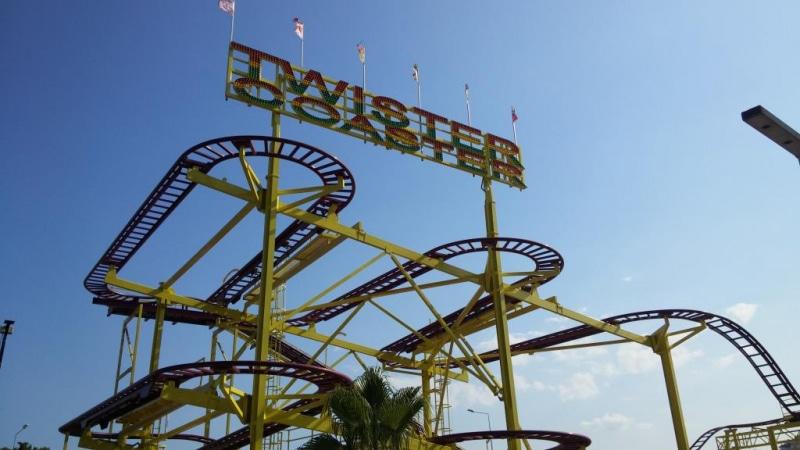
Removed from Unnamed collection
Aktur Park 
Aktur Park is a funfair in the heart of the city and has a range of rides and attractions on a medium sized location, plenty to keep the kids (and young at heart) entertained for a few hours.
With all the traditional stalls, candy floss (cotton candy for our USA friends) and toffee apples etc, some sideshows in the style of "hit the target to win" and there are some well maintained large amusement rides including a small roller-coaster, pirate boats, go-karts and dodgem cars etc. a good mix of rides suitable for all ages.
Like most parks like this its most atmospheric in the evenings and night, not to mention it's probably too hot to visit in the daytime anyway. http://antalyacentral.com/attractions/aktur-park-funfair
Map

Removed from Unnamed collection
Sea Garden 
Nowadays the Marine Gardens form an imposing park where you can visit the Natural Science Museum, the Naval Museum, the Copernicus Astronomy Complex planetarium, the first in the country, the zoo and the Terrarium. Here one can find the only Dolphinarium and Aquarium in the country.
There are also a swimming pool, tennis court, an open-air theater and a new children's complex (opened on 1 May 2002) with a lot of amusements: water wheels, slide, archery, trampoline.
Along the alley, which runs parallel to the coastline, there are a number of small cafes and restaurants, offering seafood specialties as well as attractive discos. http://visit.varna.bg/en/parks_gardens/preview/36.html
Map
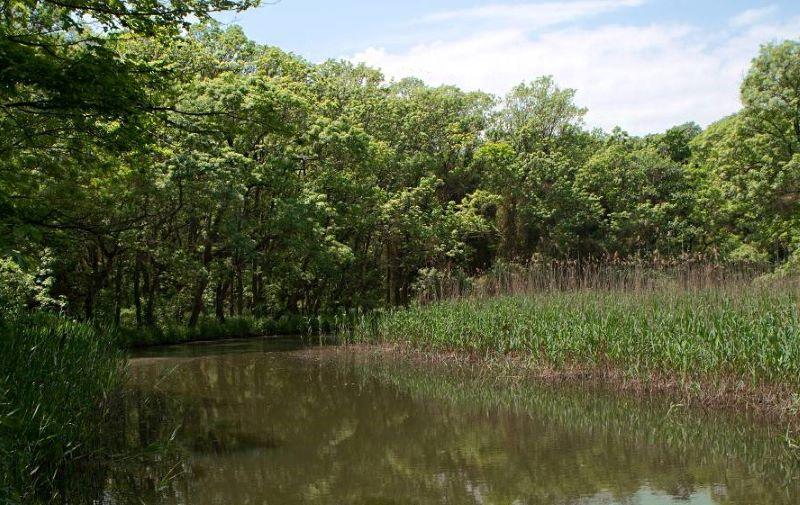
Removed from Unnamed collection
The Baltata Reserve 
The Baltata Reserve is located in the area of the village of Kranevo, Balchik municipality, and covers the lowest stream of Batova river, right by the resort of Albena. The reserve is located at a distance of about 11 kilometers from Balchik.
Baltata covers the northernmost parts of Europe’s dense forests, where many tree species can be seen, such as White Poplar (Populus Alba), Field Maple (Acer campestre), Black Alder (Alnus glutinosa), etc. The region is home to more than 260 species of higher plants, 28 of which are protected. The dominating grass species are Hyacinth (Hyacinthus), Shrubby Cinquefoil (Potentilla fruticosa), Marshmallow (Althaea Officinalis), etc.
The territory of Baltata is also home to 36 mammal species, 15 amphibian species and 16 fish species. More than 180 are the bird species, established in the region. Some of them are the Purple Heron (Ardea purpurea), Green-headed Goose (Anas platyrhynchos), Mallard (Grus grus), etc.; over 90 of them are nesting birds. http://bulgariatravel.org/en/object/207/Baltata_poddyrjan_rezervat
Map
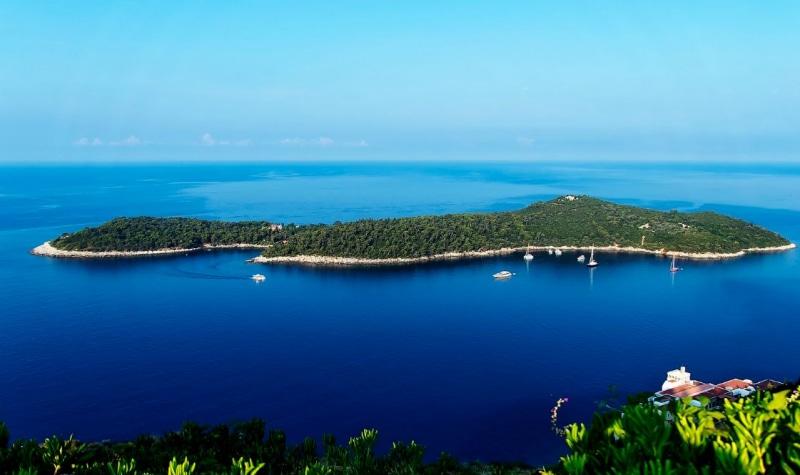
Removed from Unnamed collection
Island of Lokrum 
Just a breath away from Dubrovnik stands the mysterious island of Lokrum. It’s one of the World’s seven cursed islands.
Lush Lokrum is a beautiful, forested island full of holm oaks, black ash, pines and olive trees, only a 10-minute ferry ride to Lokrum from Dubrovnik’s Old Harbour. It’s a popular swimming spot, although the beaches are rocky. Boats leave roughly hourly in summer (half-hourly in July and August). The public boat ticket price includes the entrance fee, but if you arrive with another boat, you’re required to pay 120KN at the information centre on the island.
The island’s main hub is its large medieval Benedictine monastery, which houses a restaurant and a display on the island’s history and the TV show Game of Thrones, which was partly filmed on Lokrum. This is your chance to pose imperiously on a reproduction of the Iron Throne. The monastery has a pretty cloister garden and a significant botanical garden, featuring giant agaves and palms from South Africa and Brazil. Near the centre of the island is circular Fort Royal, commenced during the French occupation in the early 19th century but mainly used by the Austrians. Head up to the roof for views over the old town.
To reach the nudist beach, head left from the ferry and follow the signs marked FKK; the rocks at its far end are Dubrovnik’s de facto gay beach. Another popular place for a swim is the small saltwater lake known as the Dead Sea. https://www.godubrovnik.guide/dubrovnikthingstodo/island-of-lokrum/
Map
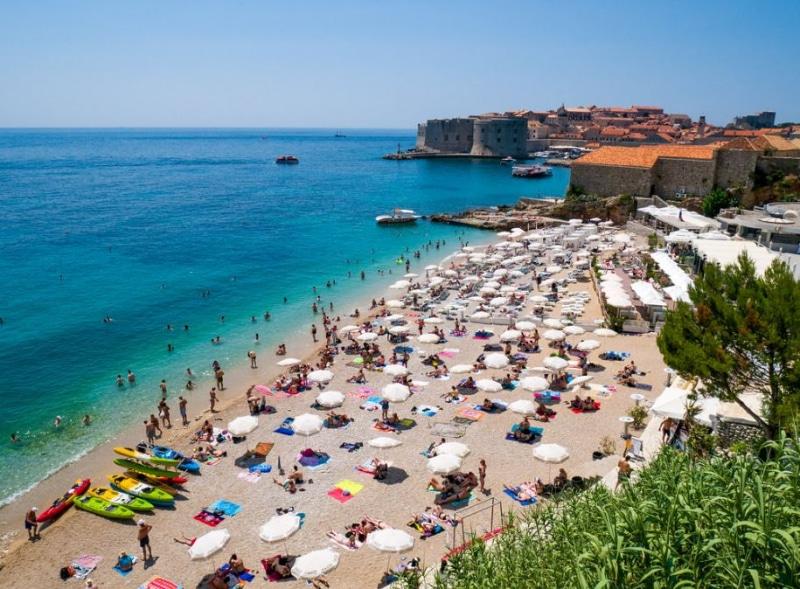
Removed from Unnamed collection
Banje Beach 
With beautiful views over Dubrovnik Old Town and Lokrum Island, Banje Beach is located in front of the eastern entrance to Dubrovnik Old Town (Ploče Gate), situated on the seashore of hotels Excelsior and Argentina. The beach has its reception, restaurant and sleek and minimalist cafe bar on the waterfront with often snobbish clientele. You can rent your deck chair and parasol, jet ski, speed boat, and god knows what else – it keeps changing from summer to summer. Banje is well known among visitors to the town so it can be very crowded in the summer seasons. https://www.dubrovnik-travel.net/banje-beach/
Map

Removed from Unnamed collection
Dubrovnik Aquarium 
Pass through the historical atrium and enter the world of tranquillity and wonderful atmosphere.
Visitors stop in front of 31 aquariums, where you can see the world of many different creatures in the Adriatic Sea. The aquarium, which has a total volume of 115 cubic meters, always contains clean and fresh seawater. Four high-pressure pumps flow 200 litres of seawater per second and also use a tank of 150 cubic meters in volume, which uses gravity to naturally flow seawater. I can.
There are three large aquariums paved with stone, the first of which is a large, gentle grouper that welcomes you. The second aquarium is the yellow fish, which is elegant and never gets tired of swimming in the aquarium. The third-largest aquarium is the longest inhabitant, the turtle, who has been here since 1953. 2004 In the year, we expanded the aquarium by 50 cubic meters for this turtle. You can also meet eels living in the cracks of rocks in the sea and many other fish. Going to the right, in the next place, there is a water tank in the hollow of the wall where the cannon was once placed, and on the left side, there are water tanks fitted into the wall. http://www.tzdubrovnik.hr/lang/ja/get/sto_raditi/6387/dubrovnik_aquarium.html
Map
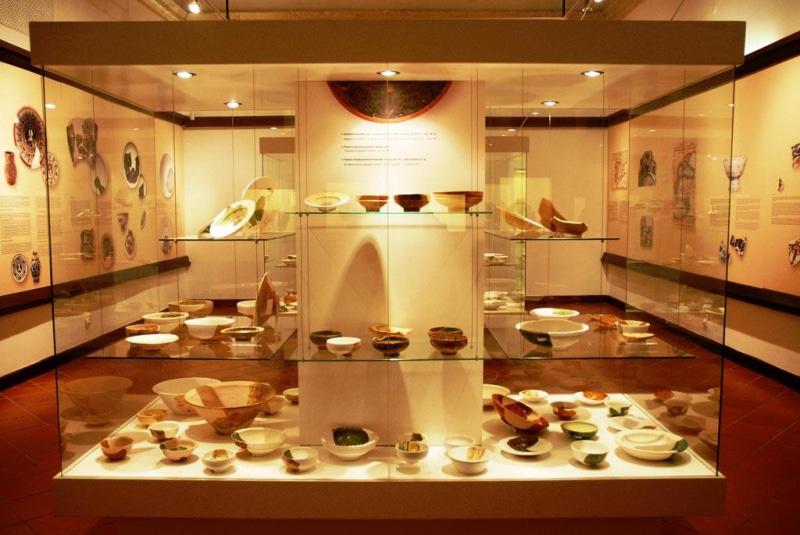
Removed from Unnamed collection
Archaeological Museum Dubrovnik 
In 1872, the Patriotic Museum was founded in Dubrovnik; in the middle of 1873, the first museum display was made in the commune building. Among the exhibits, which were mainly from the period of the Dubrovnik Republic, the archaeological objects nevertheless stood out, for example, an Egyptian mummy, Greek vases and ancient amphorae.
The donors were collectors, leading members of patrician families, sailors and Dubrovnik people living elsewhere. Foremost among them were the great benefactors and donors the Amerling brothers, who had been passionate advocates of the museum’s founding; they gave most of the Egyptian, Oriental and Japanese objects, birds, minerals and rarities of all kinds. In 1882, Arthur Evans, world-renowned archaeologist and initiator of archaeological research in the Dubrovnik area, gifted to the museum three Roman funerary inscriptions from Cavtat, the first entries into the book of donated and purchased objects.
At the time the science of archaeology was being founded in Croatia in the early 20th century, lovers of antiquities gathered around the Dubrovnik branch of the Croatian Antiquarian Society in Knin and the Braće Hrvatskog Zmaja started to investigate the ruined Church of St Stephen, and after that it served as a temporary lapidarium for pre-Romanesque sculpture. https://www.godubrovnik.guide/dubrovnikthingstodo/archaeological-museum/
Map
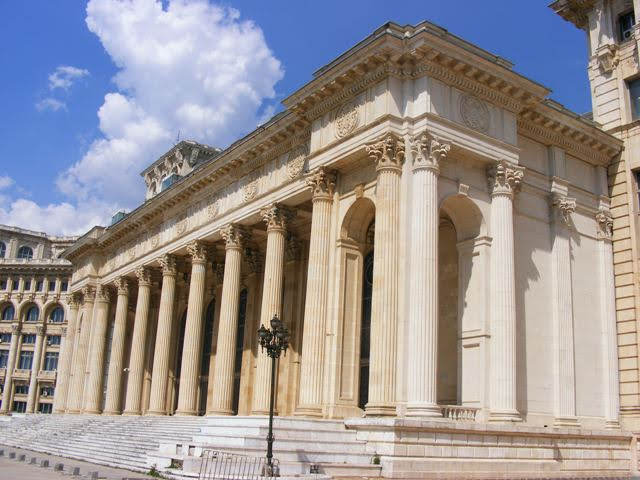
Removed from Unnamed collection
Contemporary Art Museum Bucharest 
The Contemporary Art Museum in Bucharest houses a great collection called Seeing the history from 1947 to 2007, which is an exhibition about the communist period, the progress of the Eastern European civilization, about the life of people in this period, including the Romanian Revolution in 1989 and the process of modernization of the country after the communists and the integration in the Euro-Atlantic civilization. Of course, the most important pieces of the collection are the art masterpieces exhibited, but the social, political and economical contexts are also explained on the first floor of the museum. There are also events organized here, like the recent one called The art condition in Russia and Eastern Europe in postmodern society, by an art historian Yunnia Yang from Taiwan. An impressive collection of photos made after masterpieces signed by great artists is also housed by the Museum. We are talking about 3 millions of copies in a digital archive. https://bucharest-travel.com/bucharest-contemporary-art-museum/
Map
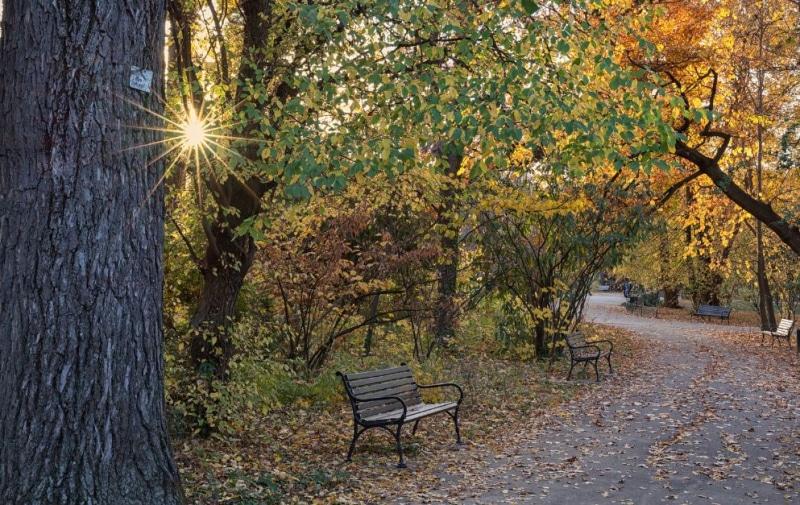
Removed from Unnamed collection
Botanical Garden Bucharest 
The Botanical Garden in Bucharest is a cultural institution, part of Bucharest University. It was founded by Alexandru Ioan Cuza in 1860, near COTROCENI PALACE.
The great exhibition, where tropical plants, huge palm or banana trees, awesome members of the orchids family, gigantic decorative trees or wild ferns can be seen. There are thematic greenhouses, very well organized in the order you to need only one hour, or one hour and a half to see all plants and trees and make free amazing pictures.
The Decorative Sector is at the entrance in the Botanical Garden and here you can find more than 500 plants that assure all over the year a great view. The flowers,Tullipa collection, Paeonia and not only, are cultivated in large groups. It was arranged in 1956.
Rare Plants Sector is the home of rare, special plants that need protection in Europe. They found it here and many of them would have been gone for a long time now if this area of the Botanical Garden hadn’t been arranged in 1962. There are plants from Dobrogea or southern Muntenia but no only. So, while you travel to Bucharest, you can visit the rare plants sector although it is an area where scientists have a lot of work to do, taking care of plants in Paeonia family, Salvia Transilvania or Fritillaria Orientalis. https://bucharest-travel.com/bucharest-botanical-garden/
Map







